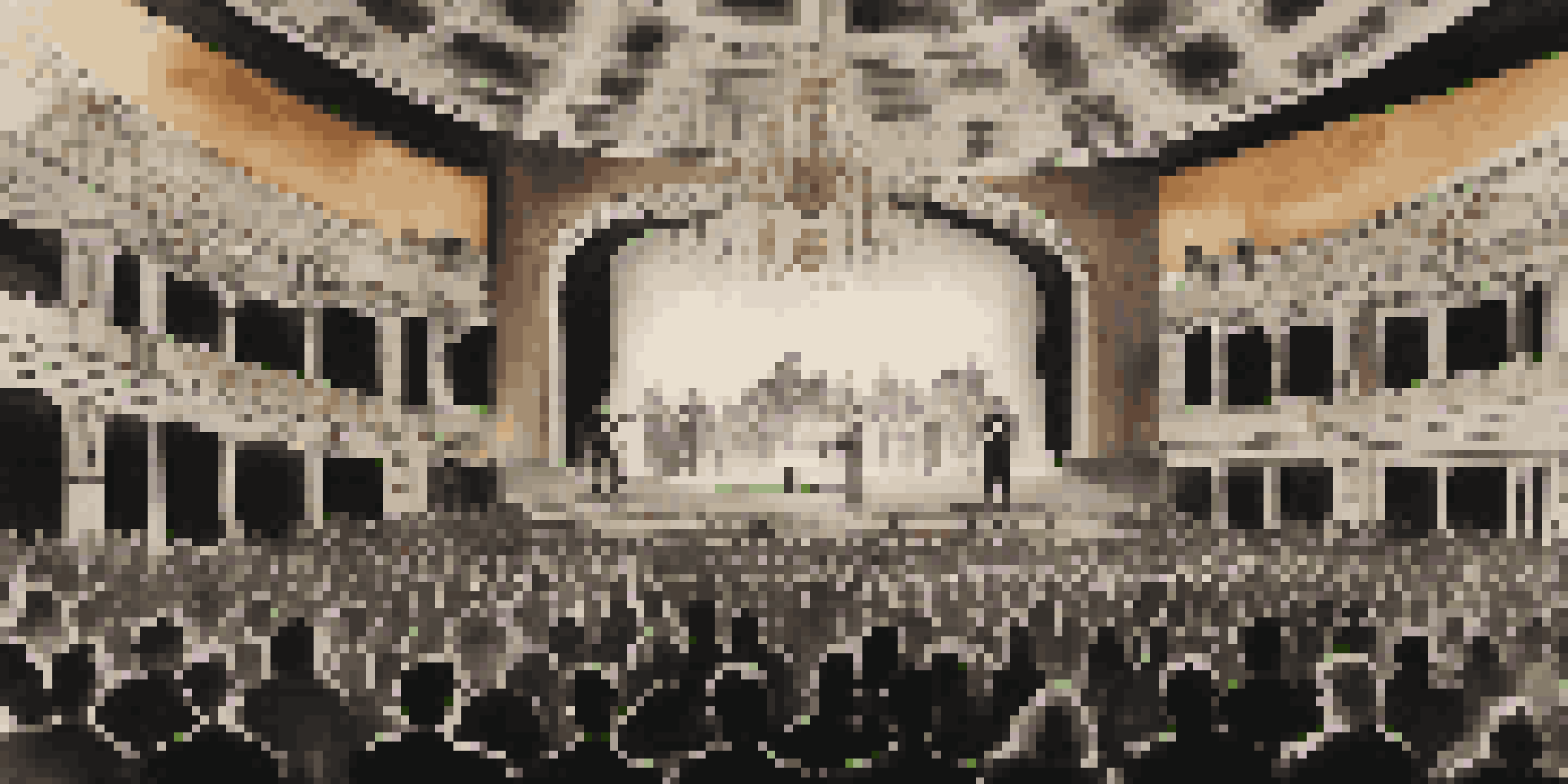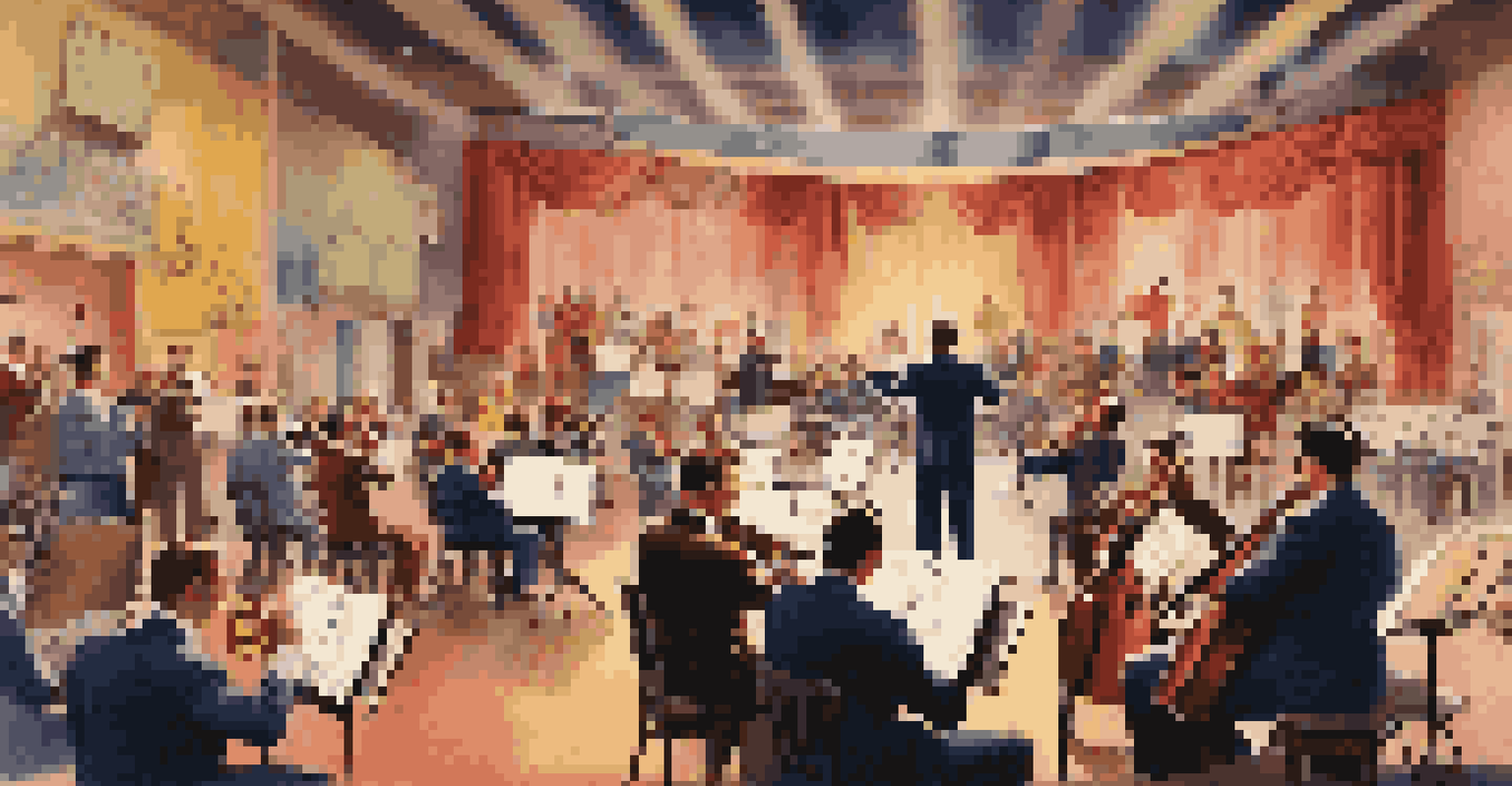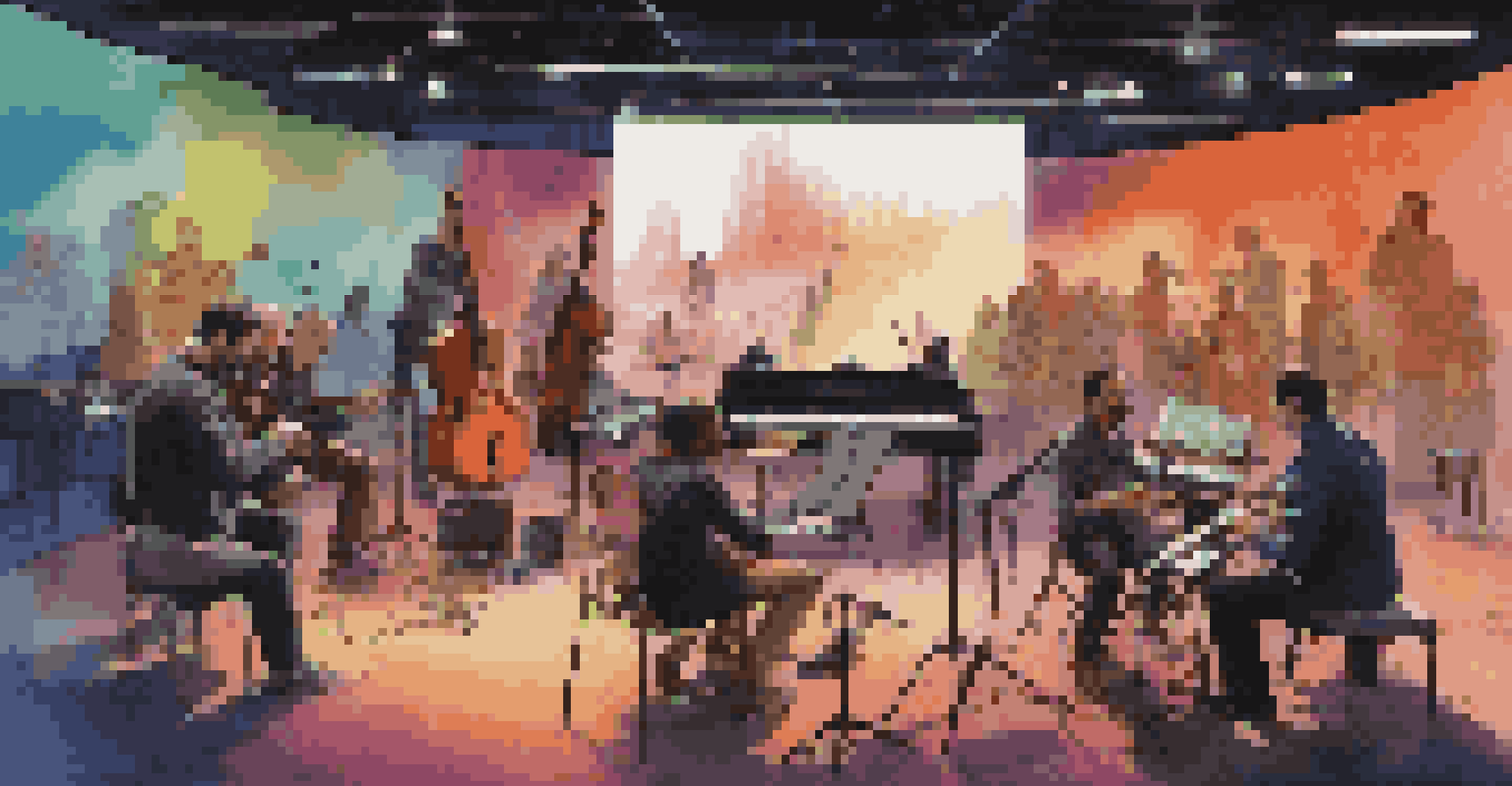Music and Film: The Evolution of Soundtracks Through Decades

The Silent Era: Music Sets the Mood in Early Film
In the early days of cinema, films were silent, relying heavily on live music to convey emotions. Musicians would accompany screenings, playing everything from classical pieces to original compositions. This unique setup allowed for a creative dialogue between the film and the music, setting the tone for scenes and enhancing viewers' emotional responses.
Music can change the world because it can change people.
One of the most famous examples from this era is the use of orchestral scores in films like 'The Birth of a Nation' (1915). The music was meticulously timed to the film's action, creating an immersive experience that engaged audiences in a way that visuals alone could not. This period laid the groundwork for the importance of music in storytelling.
As technology advanced, the introduction of synchronized sound in the late 1920s began to reshape how music was integrated into films. With the release of 'The Jazz Singer' (1927), audiences experienced the first full-length talkie, marking the dawn of a new era where dialogue and music intertwined seamlessly.
The Golden Age: Iconic Scores Define Hollywood Classics
The 1930s to the 1950s is often referred to as the Golden Age of Hollywood, where lush, sweeping scores became synonymous with iconic films. Composers like Max Steiner and Erich Wolfgang Korngold crafted unforgettable themes that elevated the cinematic experience. Their work in films such as 'Gone with the Wind' and 'The Adventures of Robin Hood' showcased how music could enhance narratives and create memorable character motifs.

During this time, film studios recognized the power of soundtracks in marketing their films. Record labels began to release soundtrack albums, allowing audiences to take the music home, further embedding the film into popular culture. This era solidified the relationship between music and film, making soundtracks a key part of a movie's identity.
Music's Vital Role in Early Cinema
In the silent film era, live music was essential for conveying emotions and enhancing the storytelling experience.
Moreover, the rise of musicals, such as 'Singin' in the Rain' and 'West Side Story', highlighted the importance of musical numbers in storytelling. These films showcased how songs could advance plots and deepen character development, proving that music was not just an accessory but a vital storytelling tool.
The 60s and 70s: Experimentation and Cultural Shifts
The 1960s and 70s marked a period of experimentation in film soundtracks, reflecting the cultural upheaval of the times. Directors like Martin Scorsese and Quentin Tarantino began to prioritize popular music in their films, using contemporary songs to create a connection with audiences. This shift highlighted how music could evoke nostalgia and resonate with viewers on a personal level.
Film is a powerful medium. It can change our understanding of the world, and music is a crucial part of that experience.
Soundtracks from films like 'Easy Rider' and 'The Graduate' featured songs from popular artists, effectively blurring the lines between film and real life. This trend not only helped to introduce younger audiences to classic music but also transformed how filmmakers approached soundtracks. The choices made by directors began to reflect broader social movements and cultural shifts.
Additionally, the rise of rock and folk music in cinema allowed for a more diverse sound palette. Composers began to draw inspiration from different genres, leading to innovative scores that matched the changing landscape of film and society.
The 80s: Synth and Pop Dominate the Soundtrack Scene
The 1980s brought about a new wave of soundtracks dominated by synthesizers and pop music. Films like 'Footloose' and 'Flashdance' featured chart-topping hits that not only complemented the film's themes but also topped the Billboard charts. This era highlighted the commercialization of soundtracks, turning them into lucrative products in their own right.
In addition to pop hits, the use of electronic music became prevalent, setting the stage for a sound that was fresh and modern. Composers like Harold Faltermeyer and Vangelis created iconic scores that defined the sound of the decade, with pieces like 'Chariots of Fire' and 'Beverly Hills Cop' becoming instantly recognizable.
Evolution of Soundtracks Through Decades
From orchestral scores in the Golden Age to eclectic mixes in the 90s and beyond, soundtracks have continually evolved to reflect cultural shifts and technological advancements.
Moreover, the rise of music videos brought a new dimension to film soundtracks. They allowed for the promotion of songs through visual storytelling, further intertwining music and film in the public consciousness.
The 90s: Diverse Genres and Eclectic Soundtracks
The 1990s saw a significant shift towards eclectic soundtracks that embraced a variety of genres. Films like 'Pulp Fiction' and 'The Lion King' featured a mix of rock, hip-hop, and orchestral compositions, catering to diverse audiences. This decade celebrated the idea that soundtracks could be a mosaic of different musical styles, creating unique listening experiences.
The success of films with standout soundtracks led to the rise of the 'soundtrack album' as a commercial entity. Songs from these films became instant hits, often charting on their own. For example, 'The Bodyguard' soundtrack, featuring Whitney Houston, became one of the best-selling albums of all time, showcasing the power of music to elevate a film's profile.
Additionally, the 90s introduced the concept of 'score sampling,' where composers would incorporate snippets of existing songs or motifs into their original scores. This technique not only added layers to the music but also connected the film to the cultural zeitgeist of the time.
The 2000s: Technology and the Digital Age of Soundtracks
The turn of the millennium brought about significant technological advancements that changed how soundtracks were created and consumed. Digital platforms like iTunes allowed fans to purchase individual songs, leading to a new era of single-track popularity rather than full albums. This shift changed the way filmmakers approached soundtrack curation and marketing.
Moreover, the rise of online streaming services further transformed the landscape of film soundtracks. Platforms like Spotify and Apple Music made it easier for fans to discover and listen to soundtracks, creating new opportunities for exposure. With curated playlists and algorithm-driven recommendations, music from films became more accessible than ever.
Global Influences in Modern Soundtracks
Today's film soundtracks blend diverse musical styles from various cultures, showcasing a rich tapestry of sound that enhances contemporary storytelling.
In this era, filmmakers began to explore the use of indie and alternative music to complement their narratives. Movies like 'Garden State' and 'Juno' featured lesser-known artists, proving that eclectic soundtracks could resonate deeply with audiences and elevate the film's emotional impact.
The Present Day: A Fusion of Genres and Global Influences
Today, film soundtracks reflect a globalized world, incorporating diverse musical styles from different cultures. Movies like 'Black Panther' and 'Crazy Rich Asians' have showcased how soundtracks can celebrate cultural heritage while appealing to a broad audience. This fusion of genres creates a rich tapestry of sound that elevates storytelling.
Moreover, the emergence of social media and platforms like TikTok has transformed how songs from films are promoted and consumed. Viral trends can propel a song to fame, making soundtracks a vital part of a film's marketing strategy.

As we look to the future, the evolution of soundtracks continues to be shaped by technological advancements and cultural shifts. The relationship between music and film remains as crucial as ever, reminding us that sound is an integral part of the cinematic experience.